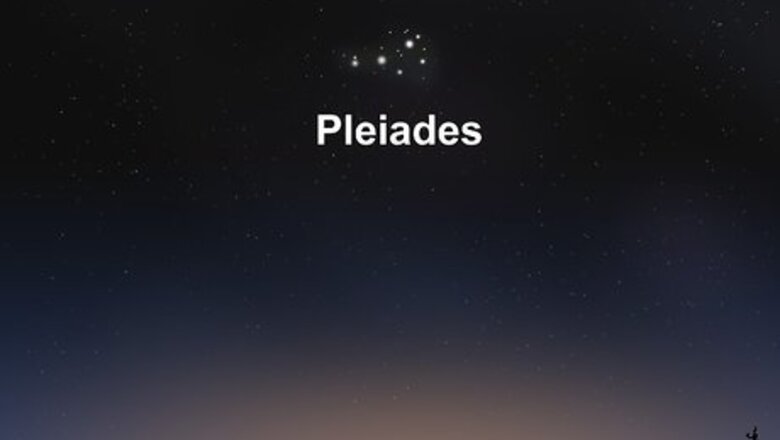
views
From the Northern Hemisphere
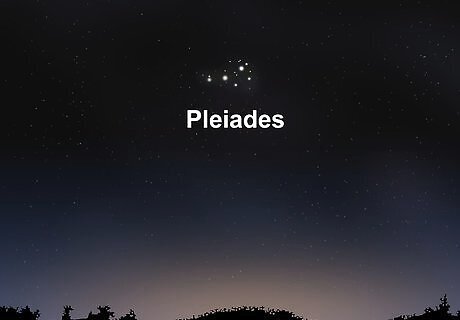
Look for the Pleiades in autumn and winter. In the Northern Hemisphere, the Pleiades star cluster becomes visible to evening observers in October and disappears in April. November is the best time to look for the Pleiades, when they are visible from dusk to dawn and reach their highest point in the sky. In early October, the Pleiades become visible a couple hours after sunset. By about February, the Pleiades are already high in the sky at sunset. (The exact timing depends on your latitude.) The Pleiades are visible in late summer and early autumn as well, but only in the middle of the night.
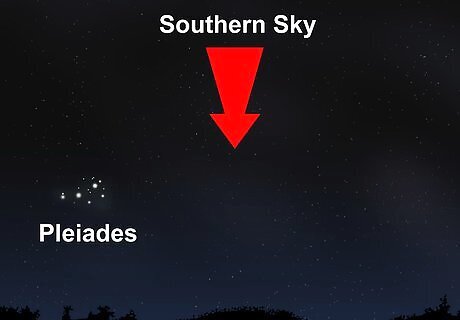
Face the southern sky. The Pleiades rise in the southeast after dusk and travel west during the night. During their peak in November, they climb high in the sky and disappear in the northwest before dawn. In late winter and early spring, they will only be visible for a few hours, traveling east to west across the southern part of the sky.
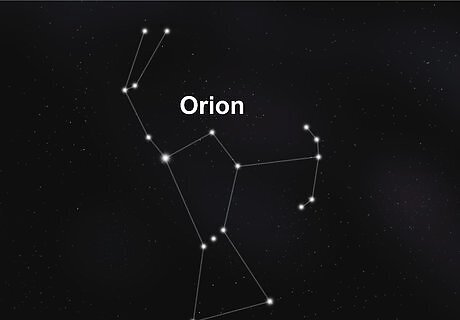
Find Orion. Orion the Hunter is one of the most famous and distinct constellations in the sky. On a winter evening at a mid-northern latitude, he stands almost due south, about halfway between the horizon and the sky directly above your head. Locate him by his belt, a straight line of three bright stars close together. The red star nearby, Betelgeuse, forms his left shoulder (from your perspective), while the blue giant Rigel on the other side of the belt is his right leg.
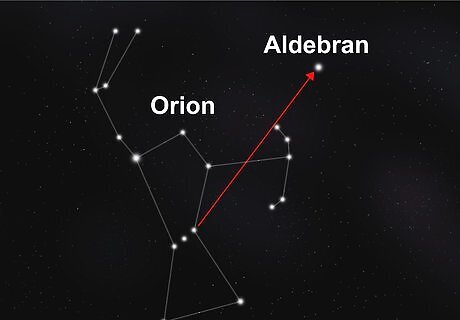
Follow the line of the belt to Aldebaran. Treat Orion's belt as an arrow pointing to your next landmark, moving from left to right in the sky. (At most times and places, this will point to the northwest.) The next bright star you see in this direction is another bright, red-orange star: Aldebaran. This is the Arabic word for "Follower," likely named because it chases the Pleiades each night. Aldebaran is not in a perfect line with the belt. Don't try to get there with binoculars, or you may miss it. Aldebaran dips below the horizon around March, or earlier in extreme northern latitudes. If Aldebaran isn't visible, try to follow Orion's belt all the way to Pleiades.
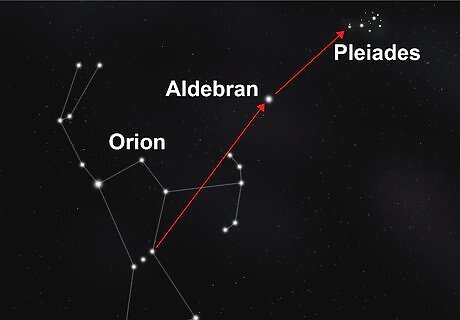
Move onward to find the Pleiades. Continue moving your eyes in the same direction (usually northwest), from Orion's belt to Aldebaran and beyond. Fairly near to Aldebaran, you should see a tight cluster of blue stars. These are the Pleiades, also called the Seven Sisters or M45. Most people can only see six stars with the naked eye, or even just a hazy clump if light pollution interferes. With a clear night and keen, dark-adjusted eyes, you may see more than seven. The Seven Sisters are clustered close together. From end to end the cluster is only ⅔ the width of Orion's Belt. This is much less than the length of the Big Dipper or Little Dipper, star patterns which some novice stargazers confuse with this one.

Use Taurus as a guide next time. The red star Aldebaran, described above, is also the eye of the constellation Taurus, the Bull. The Hyades star cluster nearby forms the chin of the bull. If you become familiar with this constellation, you can find it as a starting point and look for the Pleiades nearby. Taurus may be difficult to see during a bright moon, especially near an urban area.
From the Southern Hemisphere
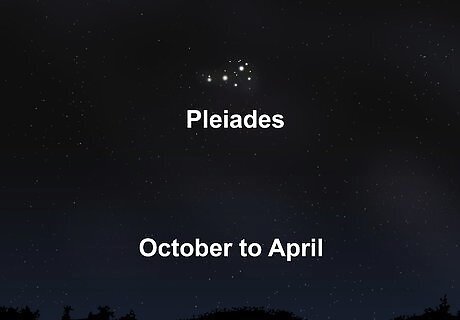
Watch for the Pleiades in spring and summer. The Pleiades are visible from about October to April, during the Southern Hemisphere's spring and summer months.
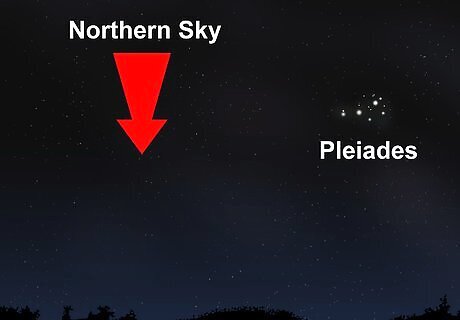
Face the northern sky. During late November, the Pleiades rise in the northeast around dusk and travel west until dawn. As the seasons progress, the Pleiades start higher in the sky when the stars appear, and spend less time in the sky.
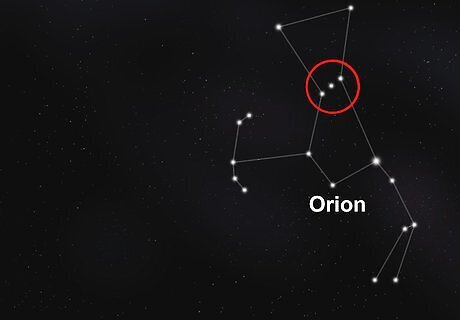
Look for a line of bright stars. Orion is standing on his head in the Southern Hemisphere, so some observers call this constellation a sauce pan instead, with Orion's sword the handle pointing upward. The rim of the saucepan (or Orion's belt) is a trio of bright stars in a straight line. This distinct shape is a starting point for locating many constellations. This line has the bright red star Betelgeuse on one side, and the bright blue star Rigel on the other.
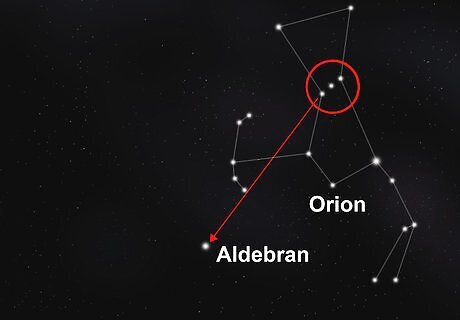
Follow the line left in the sky to Aldebaran. Use the line as an arrow pointing left across the sky. The next bright star in this direction is Aldebaran, a bright red supergiant. This is the eye of the constellation Taurus the Bull. If the sky is clear and the moon is dim, you can see the chin of the bull right next to Aldebaran, formed by the Hyades star cluster.

Continue on to the Pleiades. Keep following the same line from Orion's belt, and you'll run into a fairly dim cluster of blue stars. These are the Pleiades, also called the Seven Sisters — although most people can only see six or fewer, and telescopes can see many more. The Pleiades are an "asterism," a star pattern much smaller than a constellation. If you hold your thumb out at arm's length, the cluster is only about twice the width of your thumbnail.




















Comments
0 comment